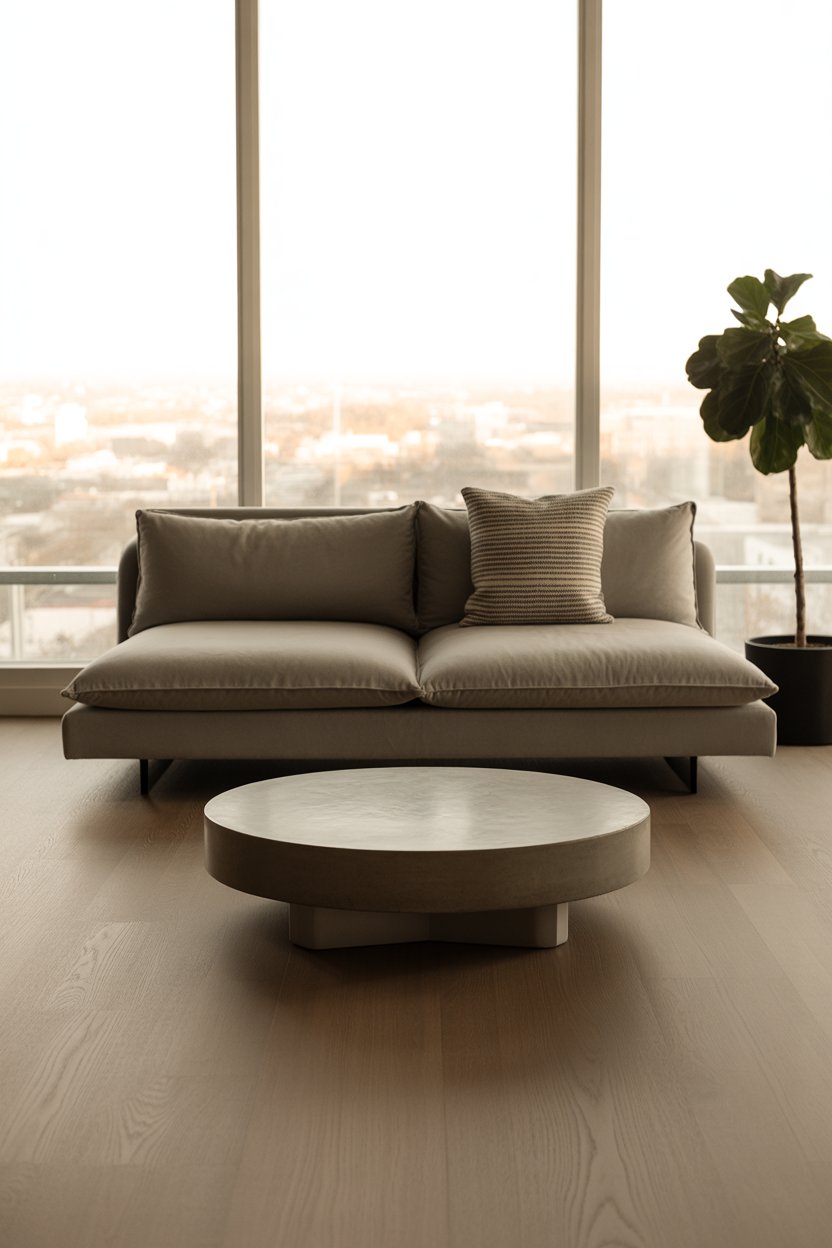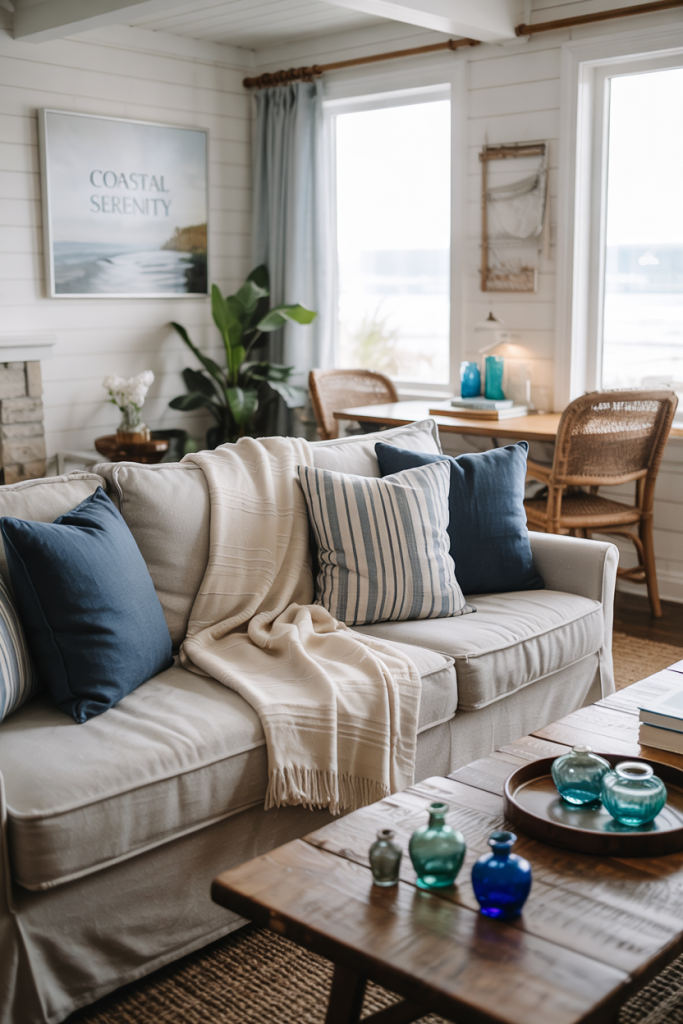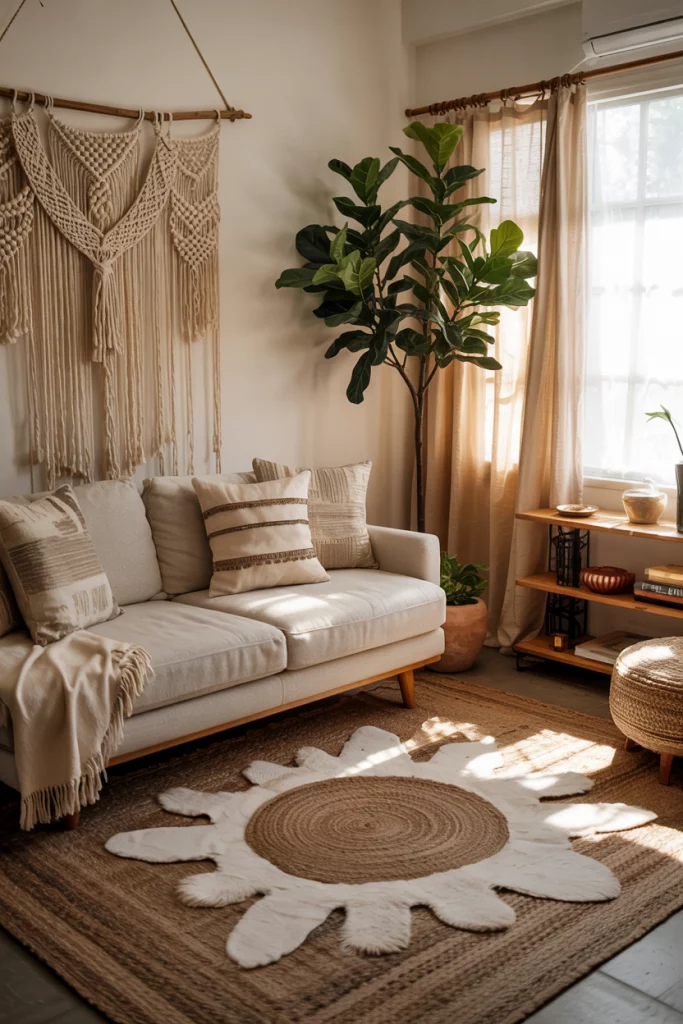Unconventional Living Room Concepts that Redefine Layout and Furniture Ideas for Modern Homes
Introduction
The living room has always been the heartbeat of a home—where guests gather, families unwind, and everyday life plays out. But as design boundaries evolve, so do our expectations of this central space. Homeowners are increasingly rethinking the layout, opting for fresh ideas that go beyond the traditional sofa-coffee table-television setup. This article dives into ten bold and unconventional living room concepts, each offering a new perspective on seating, furniture, and overall design. Whether you’re drawn to minimalist vibes or maximalist expression, prepare to be inspired by concepts that defy convention but embrace comfort and creativity.
1. Library-Inspired Lounge
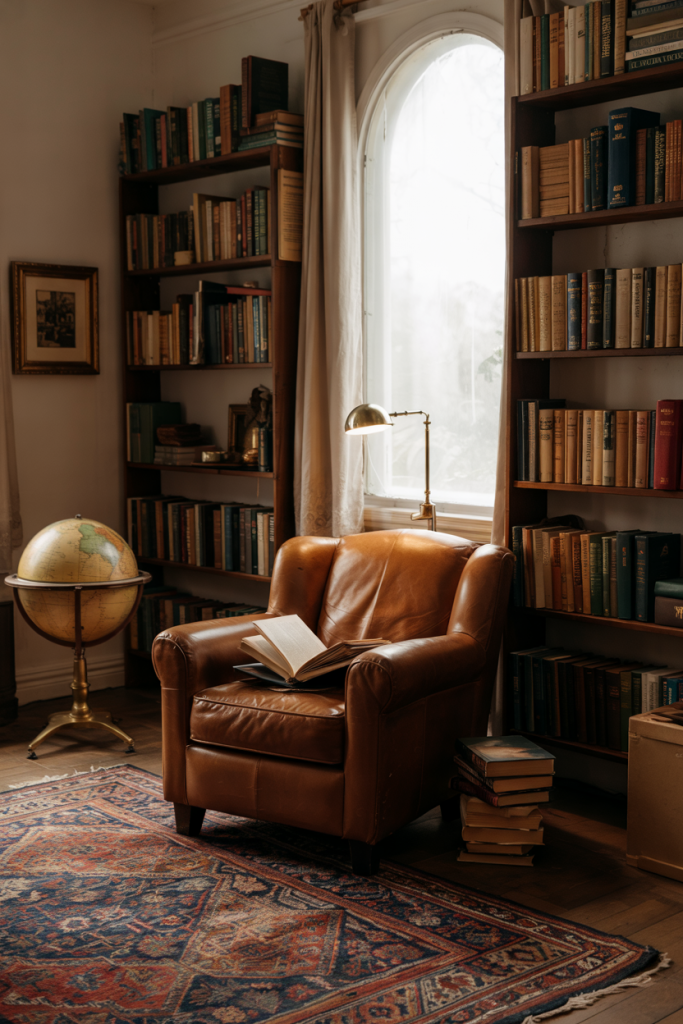
If your idea of paradise involves a good book and cozy lighting, a library-inspired living room could be your dream setup. Instead of centering around a TV, this layout prioritizes wall-to-wall bookshelves, layered seating, and reading nooks. Leather armchairs or velvet loveseats serve as furniture anchors, while warm lamps and vintage rugs add timeless decor. This setup is perfect for city dwellers craving a serene escape without sacrificing style. As noted by Apartment Therapy, a “library wall” can double as both storage and statement.
2. Sunken Conversation Pit
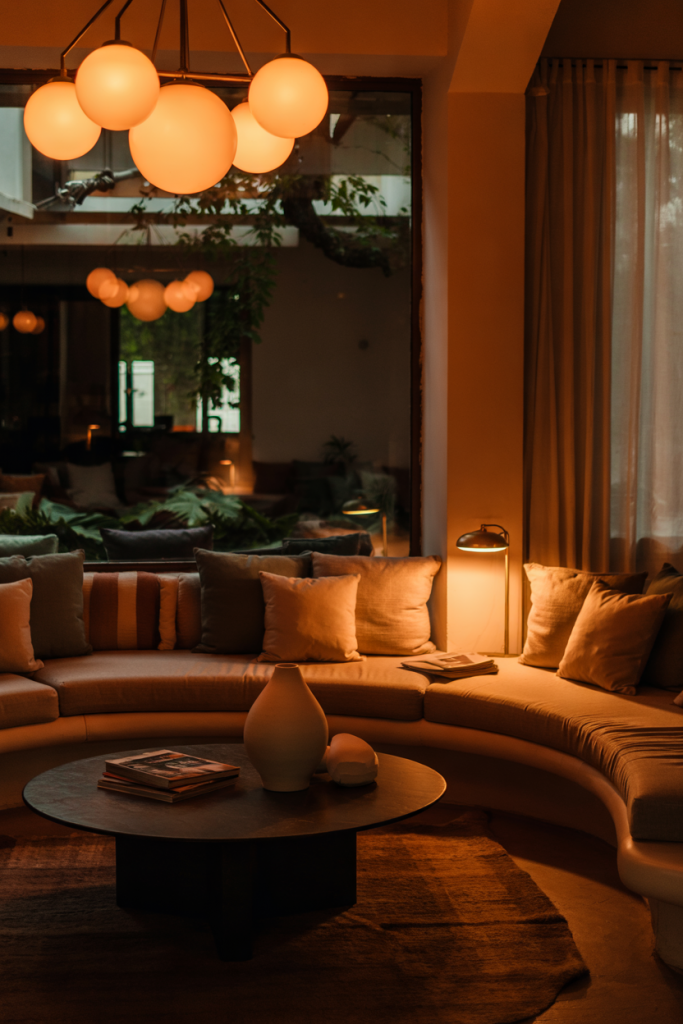
Reviving a trend from the 1970s, a sunken conversation pit brings nostalgic charm with a bold twist. This design sinks the central seating area slightly below floor level, creating a cocoon-like atmosphere for socializing. Surround the pit with plush cushions, low-profile furniture, and earthy tones to create an inviting vibe. It’s a stunning visual break from standard living room layouts and a guaranteed conversation starter. Designer Emily Henderson notes it adds “dimensionality and drama to open spaces.”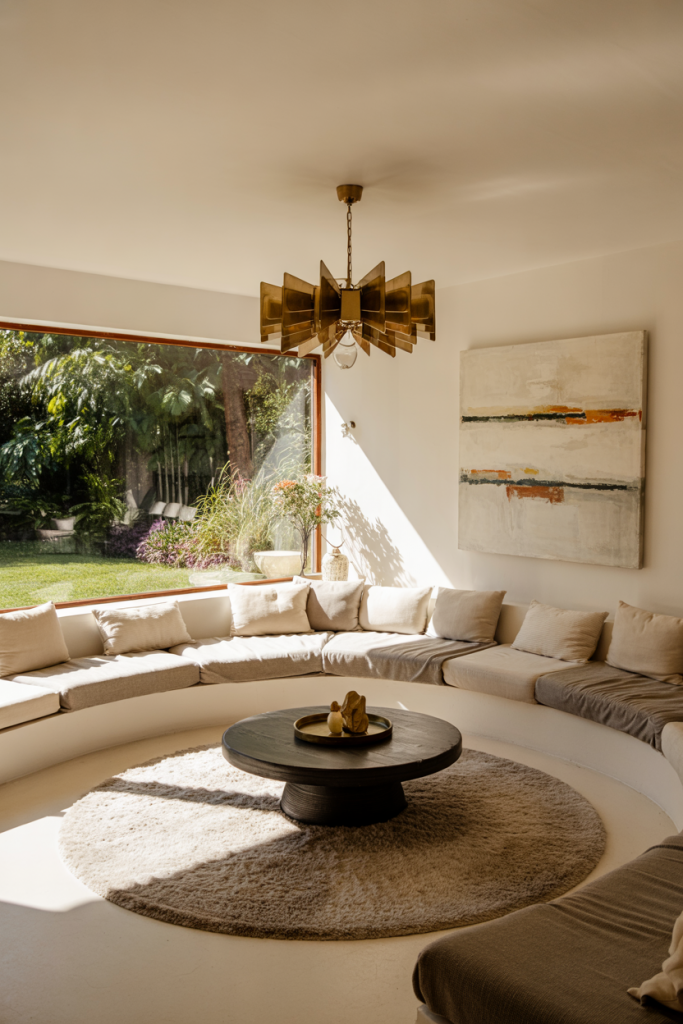
3. Multipurpose Modular Space
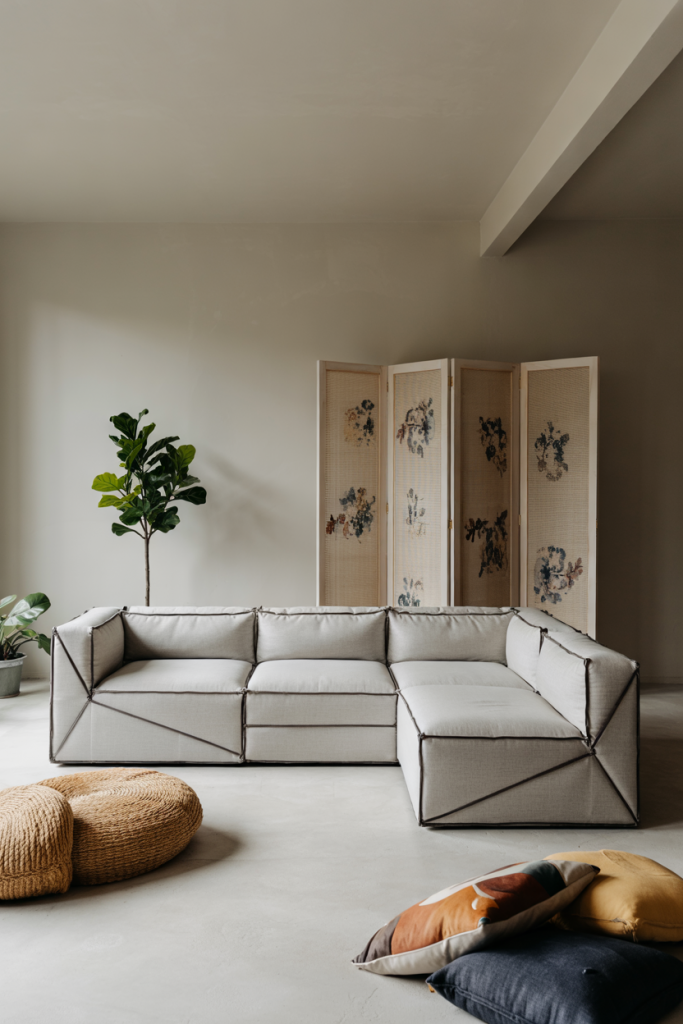
Gone are the days when a living room served only one function. A modular layout allows for constant reinvention—reading corner one day, yoga zone the next. Opt for flexible furniture like movable poufs, folding screens, and platform couches. Add layered decor like rugs, hanging textiles, and open shelving to define zones. The idea is rooted in adaptability, ideal for small homes or open-plan apartments. According to Dwell, modular living rooms “respond to lifestyle changes with ease.”
4. Industrial Loft Contrast
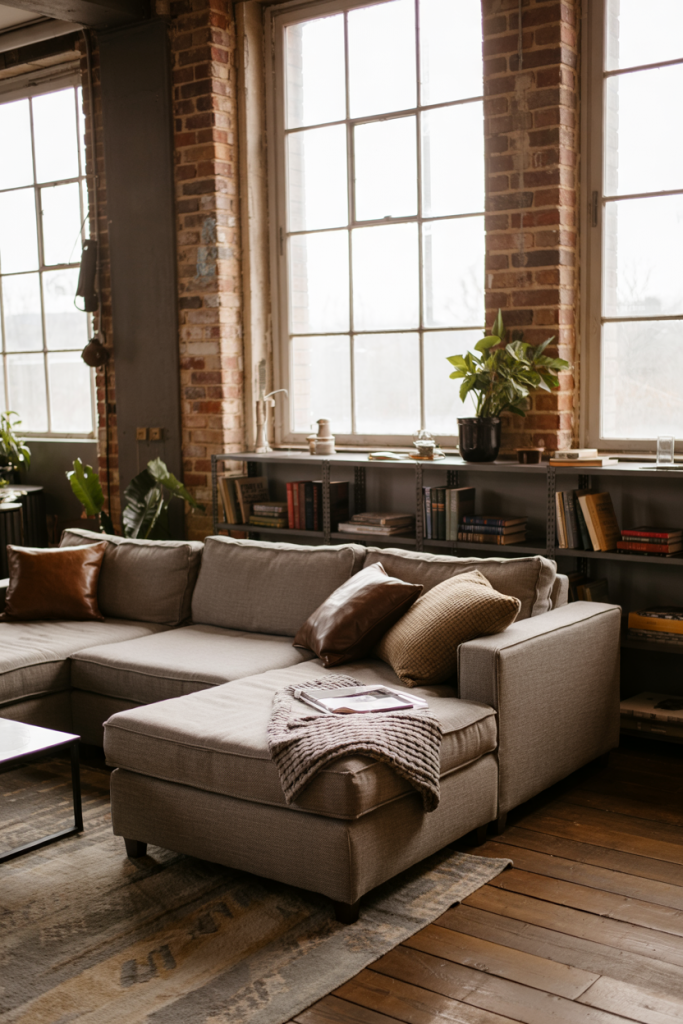
Channel a Brooklyn-loft aesthetic with exposed brick walls, metal accents, and salvaged furniture. This design plays with texture and contrast—pairing rugged materials with soft seating like linen sofas or boucle chairs. Opt for an open layout that lets architectural features shine. Black steel bookcases and Edison-bulb lighting contribute to the raw-meets-refined vibe. As Domino Magazine puts it, “industrial doesn’t have to mean cold—it’s about bold character.”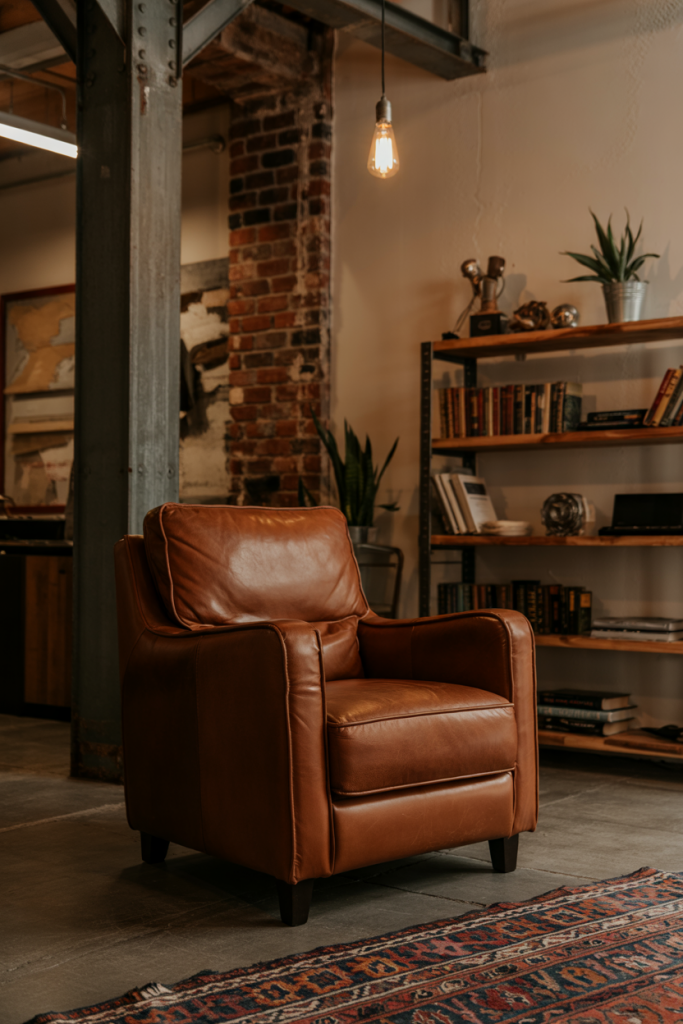
5. Indoor-Outdoor Merge
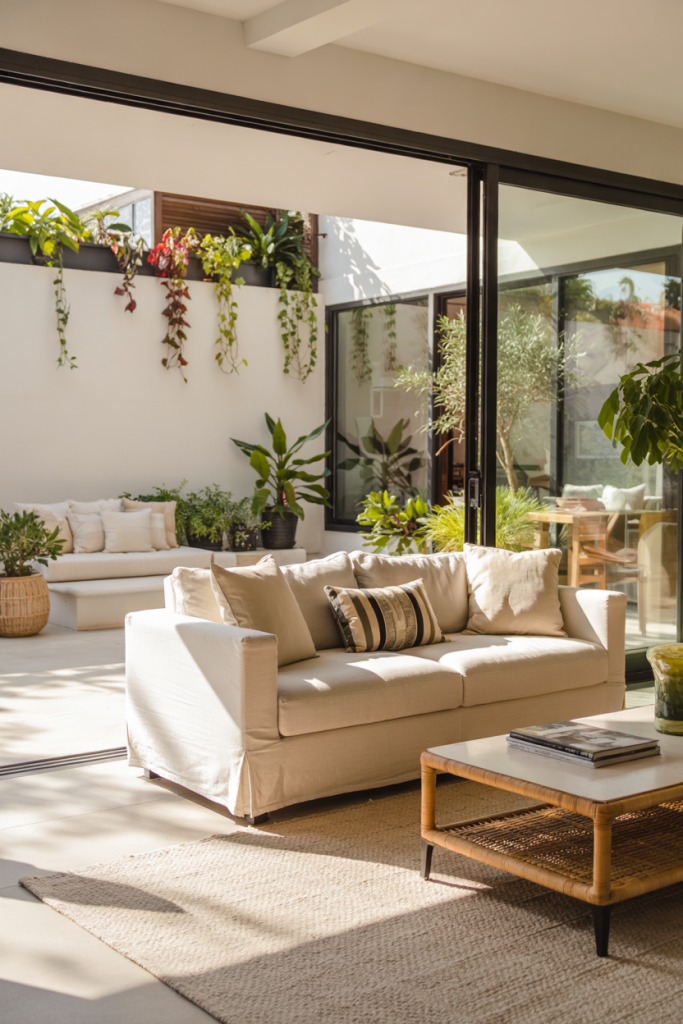
For those in warmer climates, merging the living room with outdoor space blurs the line between inside and out. Use sliding glass doors or retractable walls to extend the layout, bringing in sunlight and breeze. Incorporate natural materials like rattan furniture, linen drapes, and plant-filled decor. This idea supports both open-air entertaining and tranquil lounging. Architectural Digest calls it “the ultimate luxury of flow.”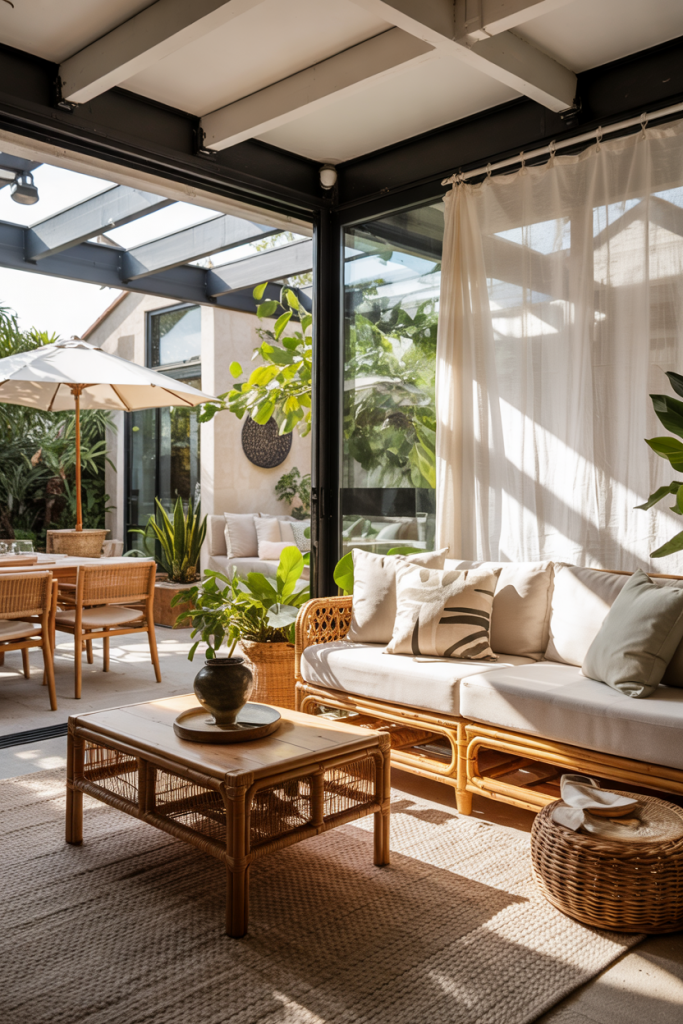
6. Gallery Wall Theater
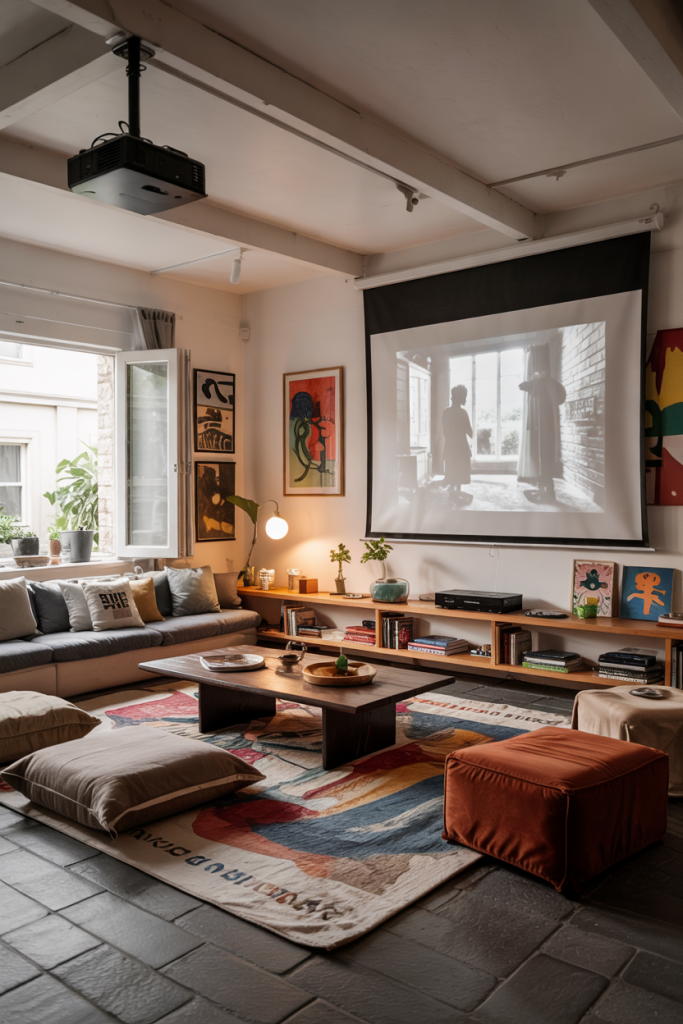
Instead of a standard media setup, turn your living room into a personal art exhibit that doubles as an entertainment space. Mount a projector onto the ceiling, and use a retractable screen that doesn’t interrupt the decor. Surround it with an eclectic gallery wall, floating furniture, and flexible seating like beanbags or floor sofas. This design centers both creativity and comfort, ideal for film buffs with a flair for style.
7. Elevated Minimalism

Strip it all back—then elevate it. Minimalist ideas don’t have to feel cold. Opt for sculptural furniture, monochrome tones, and asymmetric layout choices. Think a single curved sofa paired with one abstract wall hanging or floating shelves instead of bulky cabinets. This concept creates serenity through restraint, and it’s particularly effective in small urban apartments. As The Spruce notes, “less can be deeply expressive.”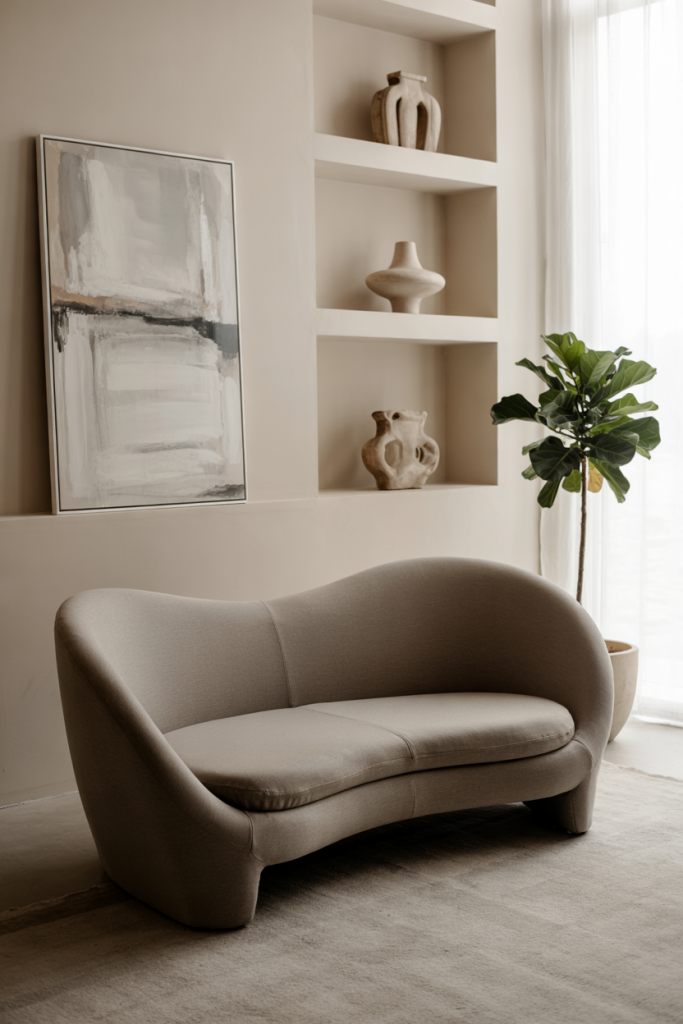
8. Maximalist Jungle Room
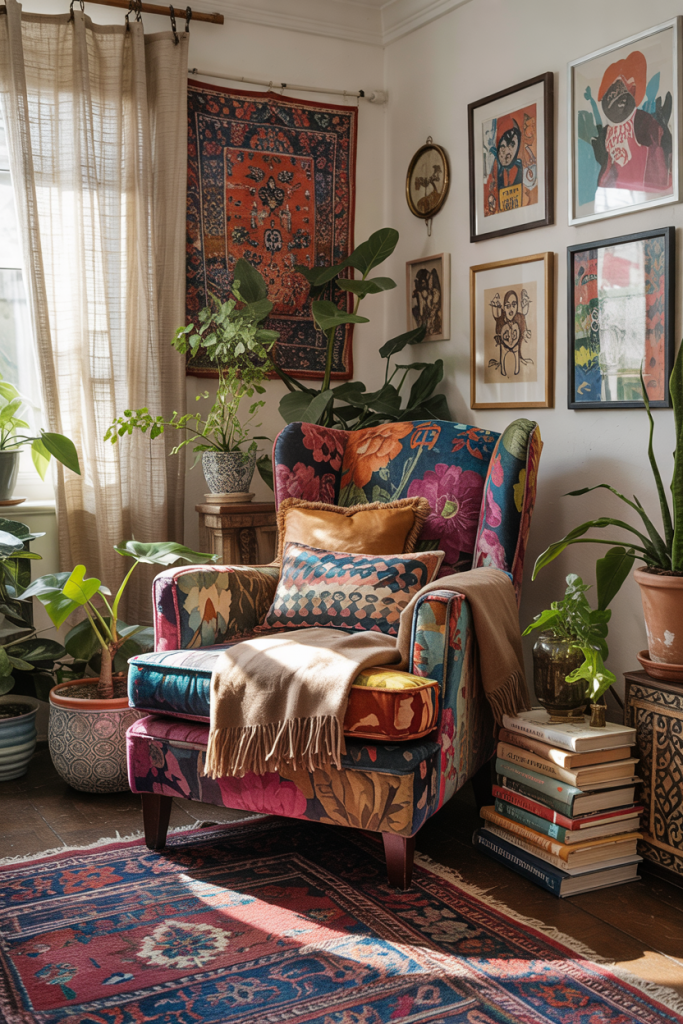
If minimalism isn’t your thing, go the opposite direction with a lush, maximalist jungle room. Think bold prints, vibrant decor, eclectic furniture, and layers of plants. Use an open layout but anchor it with colorful rugs and mismatched seating. Every inch of the room tells a story—an explosion of personality that’s both daring and inviting. Designer Justina Blakeney’s “Jungalow” aesthetic is a huge influence here.
9. Circular Flow Arrangement
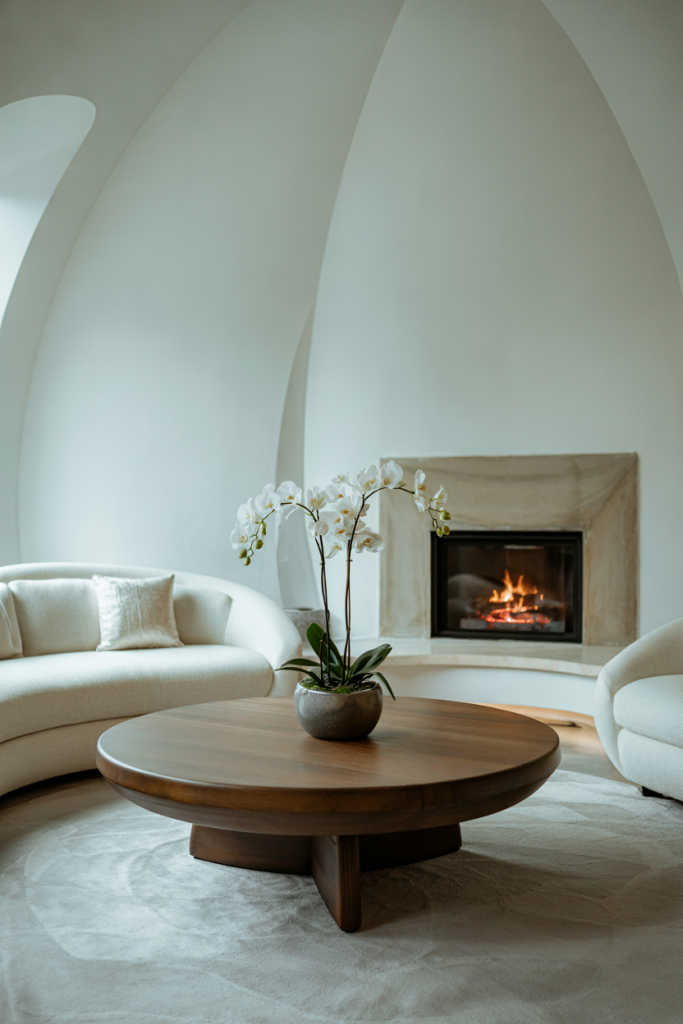
Break free from the boxy norm with a circular layout. Arrange curved sofas or swivel chairs around a central coffee table or low fire feature. This setup enhances conversation and softens the space visually. Choose organic-shaped furniture and sculptural decor to keep the eye moving. The concept works especially well in round or oddly shaped rooms. According to Houzz, this type of design fosters connection and intimacy.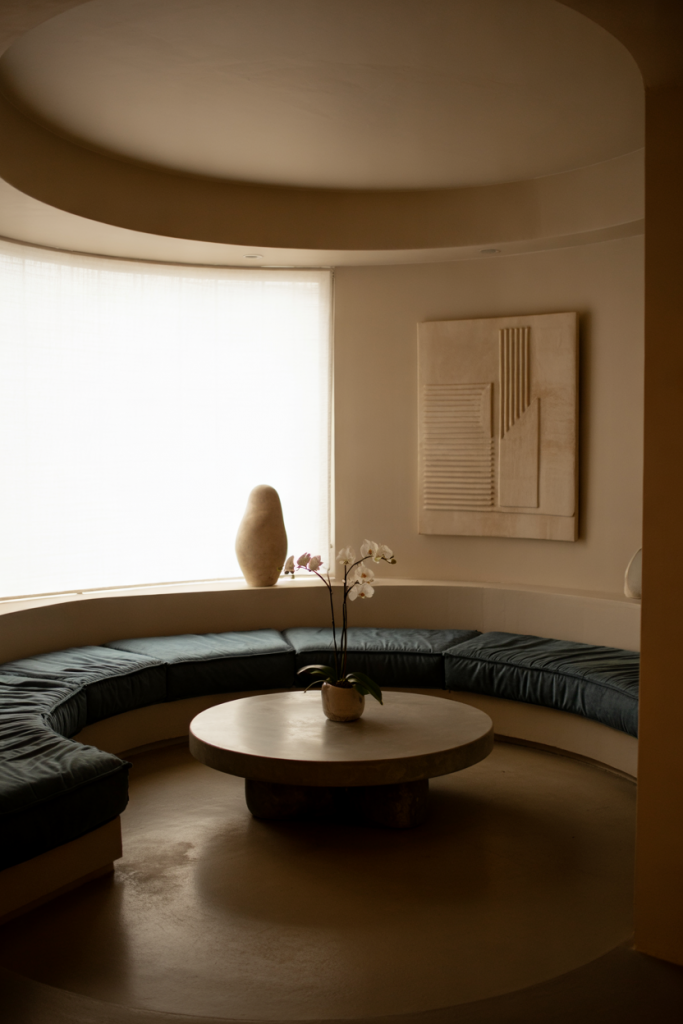
10. Theater-Inspired Lounge
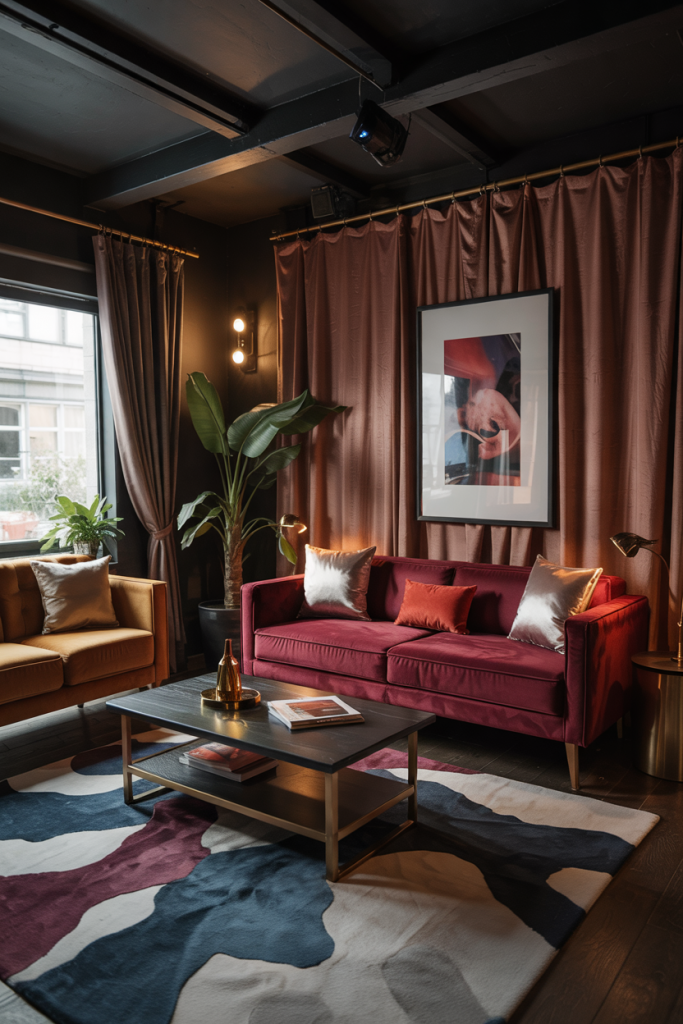
Turn your living room into a personal stage with tiered seating, dramatic lighting, and velvet accents. This design mimics boutique theaters but keeps the comfort of home. Add layered drapery, spotlight pendants, and moody wall colors. Modular risers can elevate sofas or chaise lounges to create a tiered look. Great for hosting movie nights or dramatic readings. As designer Bobby Berk says, “Design should entertain.”
11. Lounge Meets Workspace
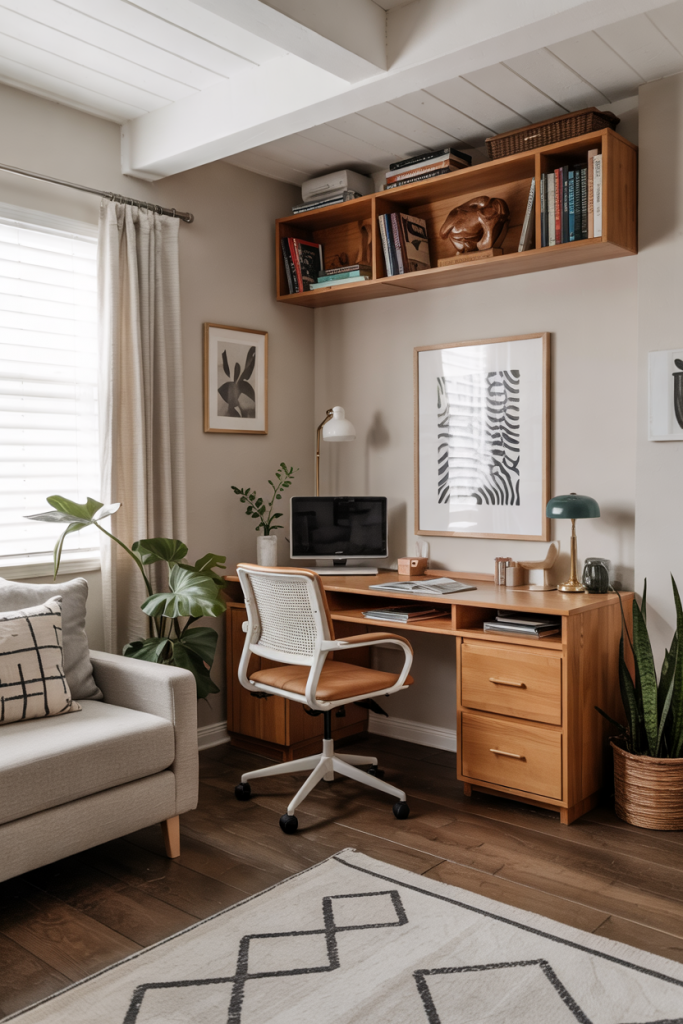
Blending leisure with productivity, this concept turns part of the living room into a stylish home office. Use a compact desk with hidden storage, a sculptural office chair, and minimal tech to avoid cluttering the decor. The layout should ensure work zones and seating areas flow together but remain distinct. According to The Everygirl, multifunctional furniture is key for maintaining both function and aesthetics.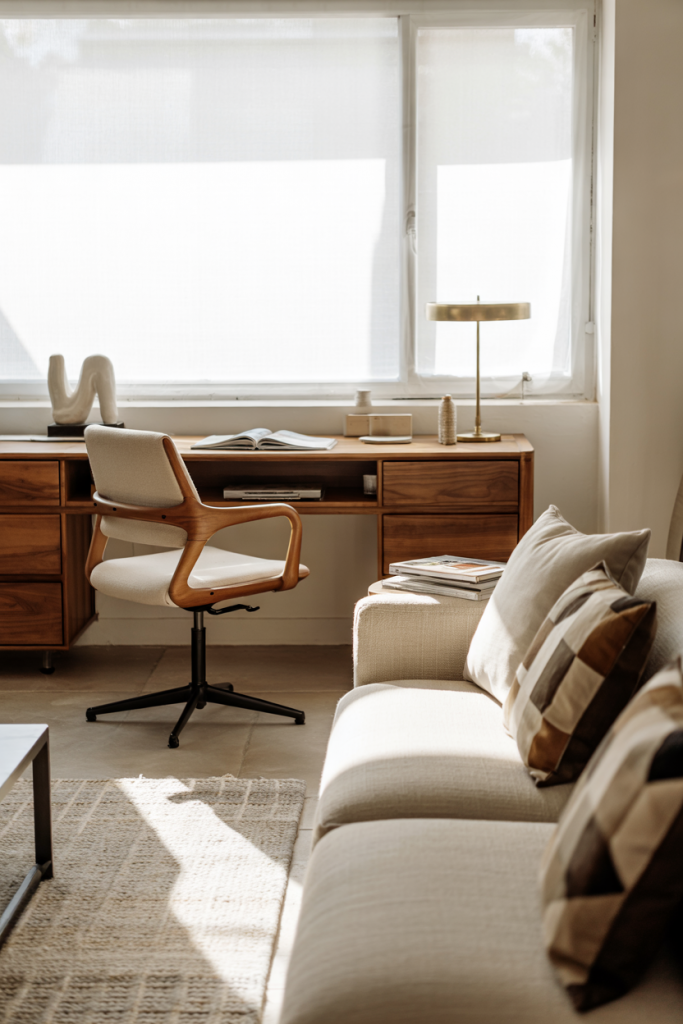
12. Floating Furniture Setup
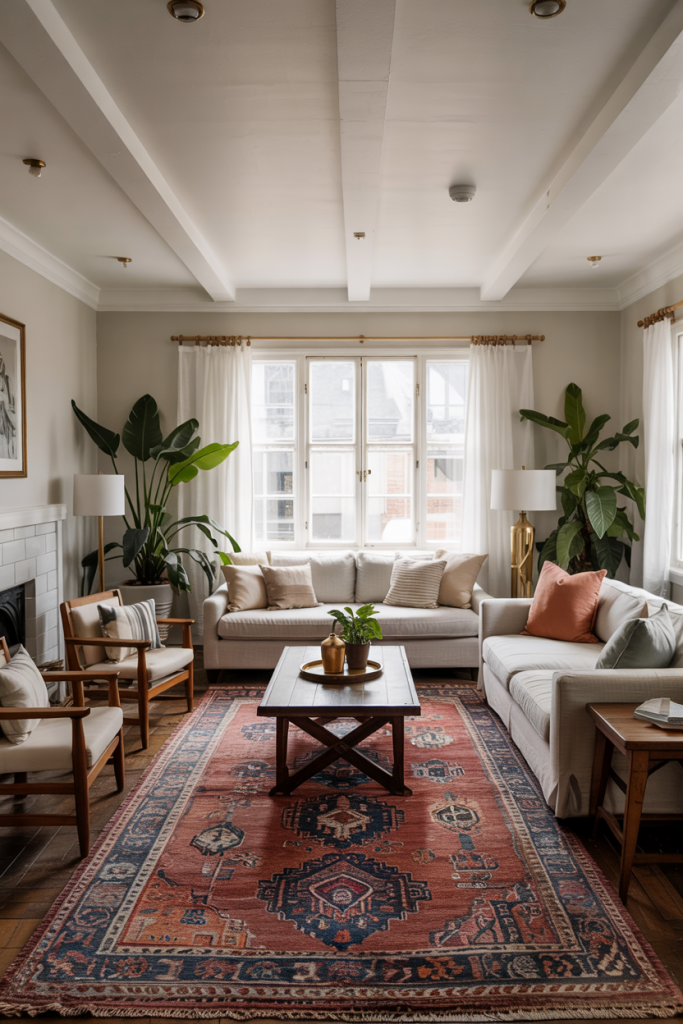
This unconventional layout pulls all major furniture away from the walls to create intimacy in the center of the room. Use area rugs to anchor seating arrangements and keep lighting focused inward. It’s ideal for open floor plans or large spaces where traditional perimeter setups feel too spread out. Emily Henderson often recommends “float then frame” to redefine spatial boundaries.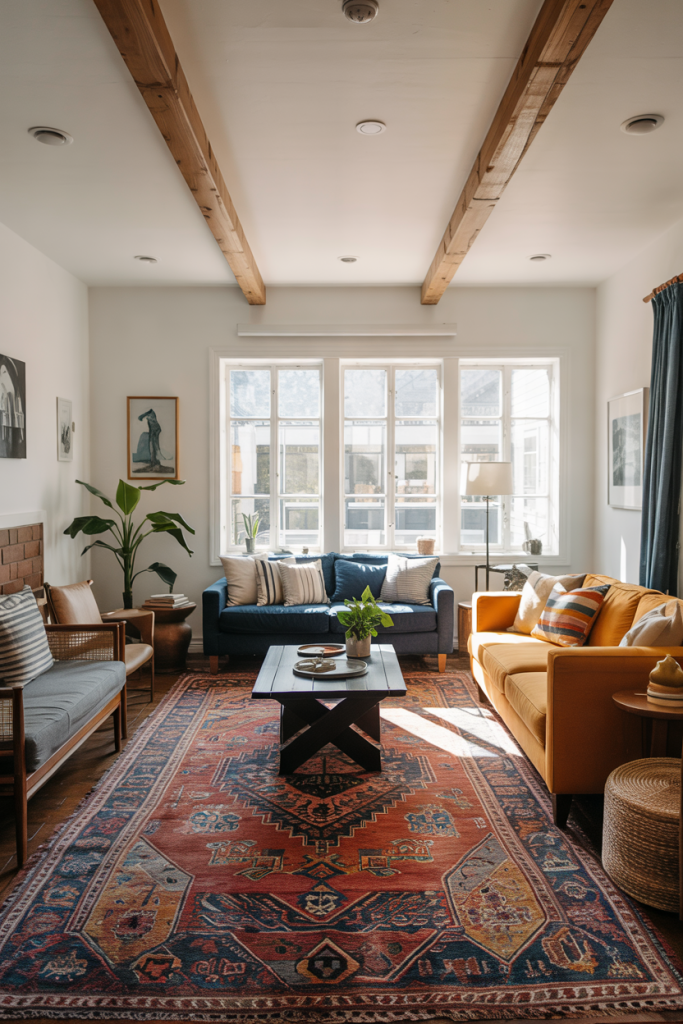
13. Monochrome Drama
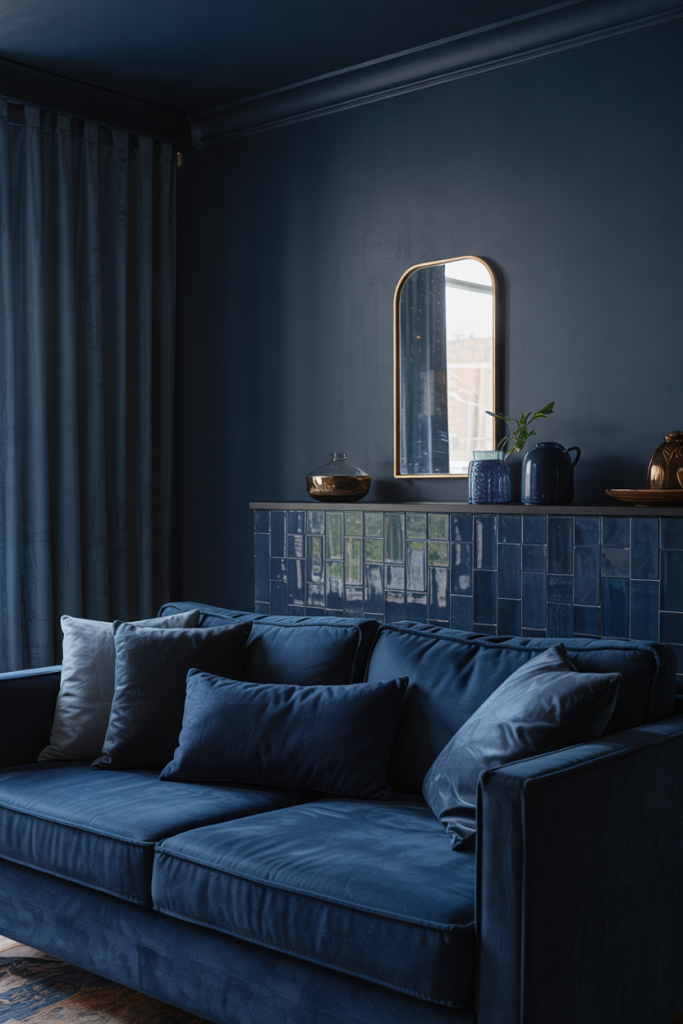
Choosing one bold color and layering it across walls, furniture, and decor adds theatrical impact. Think navy blue or deep green—then vary textures like velvet, matte paint, or glossy tiles. This design concept uses repetition for visual cohesion while still feeling bold and immersive. Designer Athena Calderone says tone-on-tone living rooms feel “curated, not chaotic.”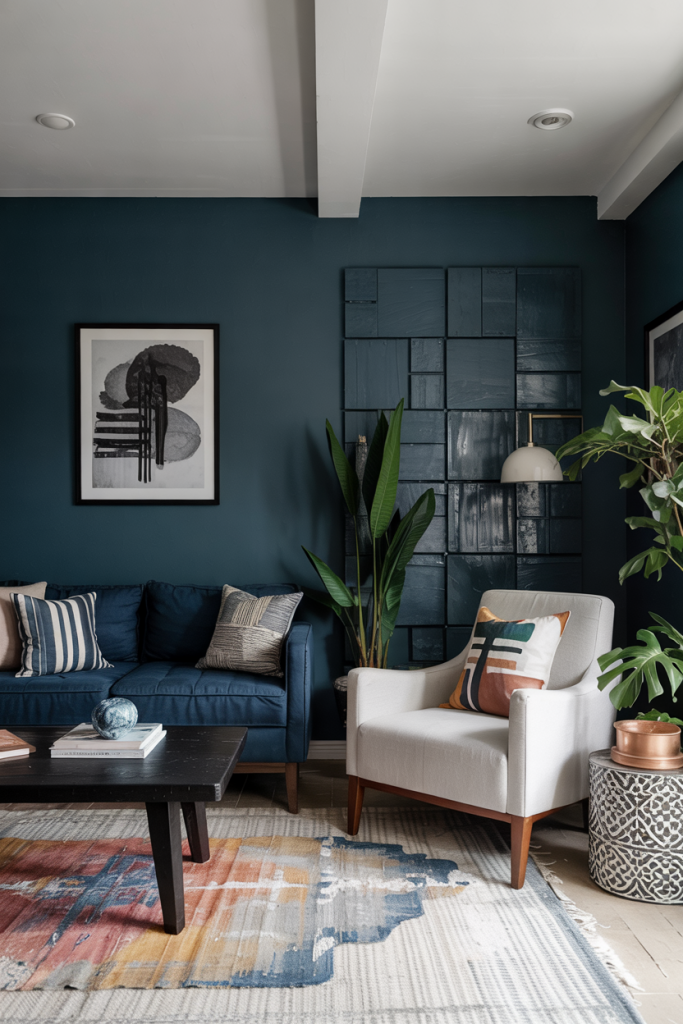
14. Ceiling-Focused Space
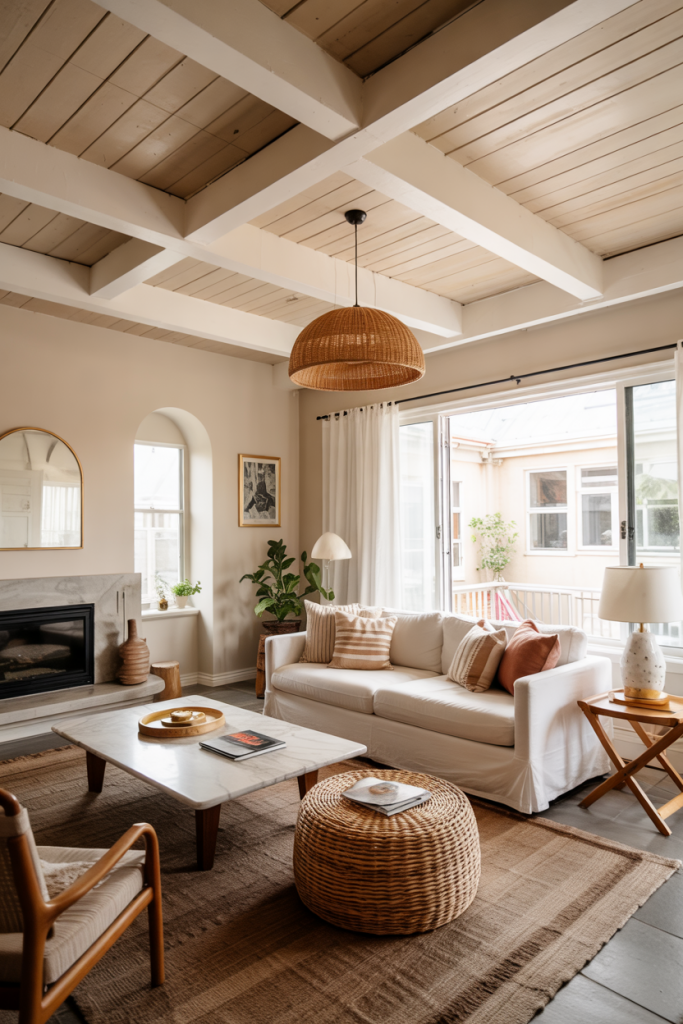
In most living rooms, the ceiling is an afterthought—but here, it becomes the focal point. Use bold paint, wood slats, or even wallpaper to draw the eye upward. This design elevates the entire layout, especially when paired with low-profile seating and minimal furniture. According to Elle Decor, a styled ceiling can “add volume and verticality without expanding square footage.”
15. Split-Level Social Zones
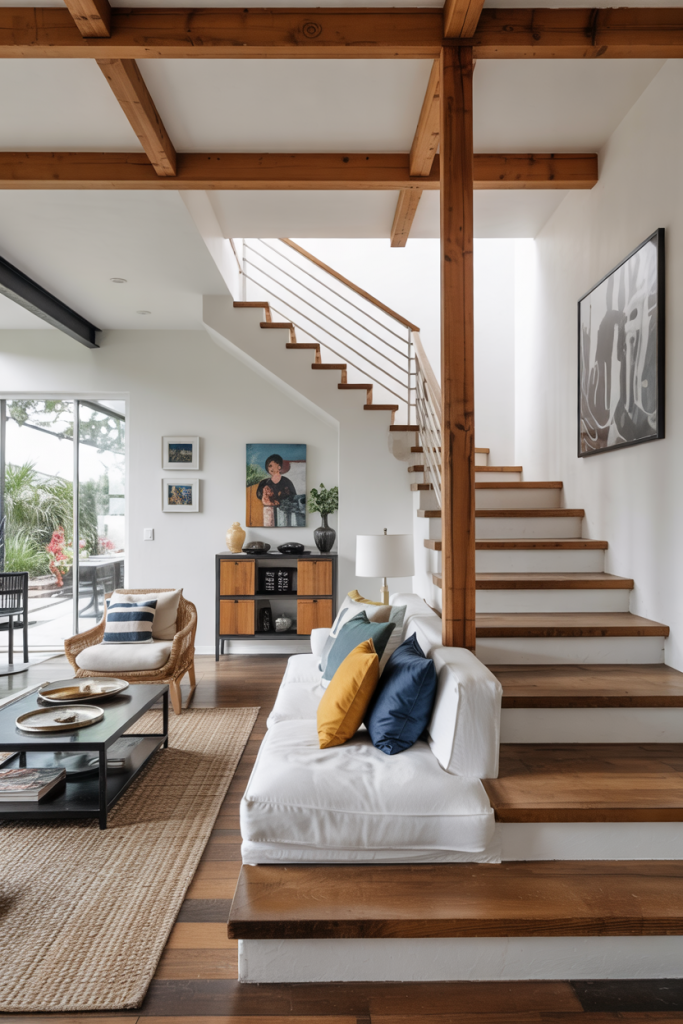
Create multi-height zones within your living room using platforms, risers, or step-down layouts. This physical division encourages multiple uses—lounge below, bar or reading area above. The contrasting levels make seating more dynamic and the design more engaging. HGTV calls it “zoning with elevation,” perfect for entertaining or flexible living.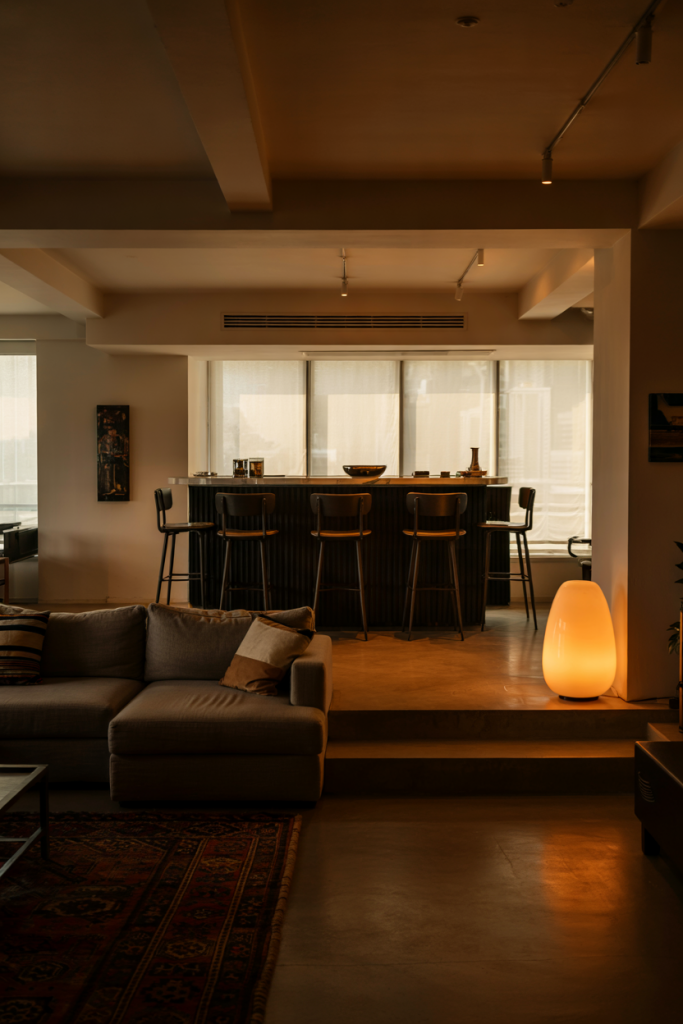
16. Fabric-Draped Enclosure
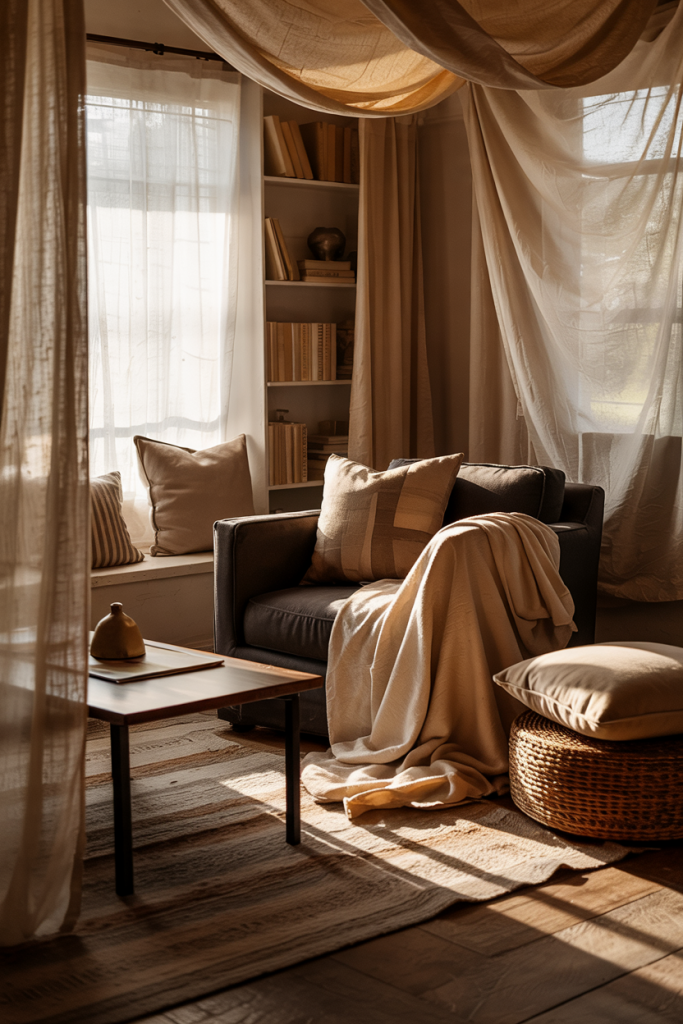
Wrap your living room in soft drapes or fabric panels, turning it into a cocoon of texture and warmth. This decor-driven idea works well in spaces that need softening—like lofts or modern builds. Choose linen or sheer cotton to diffuse light and add movement. The seating area feels more intimate, especially with layered rugs and plush furniture.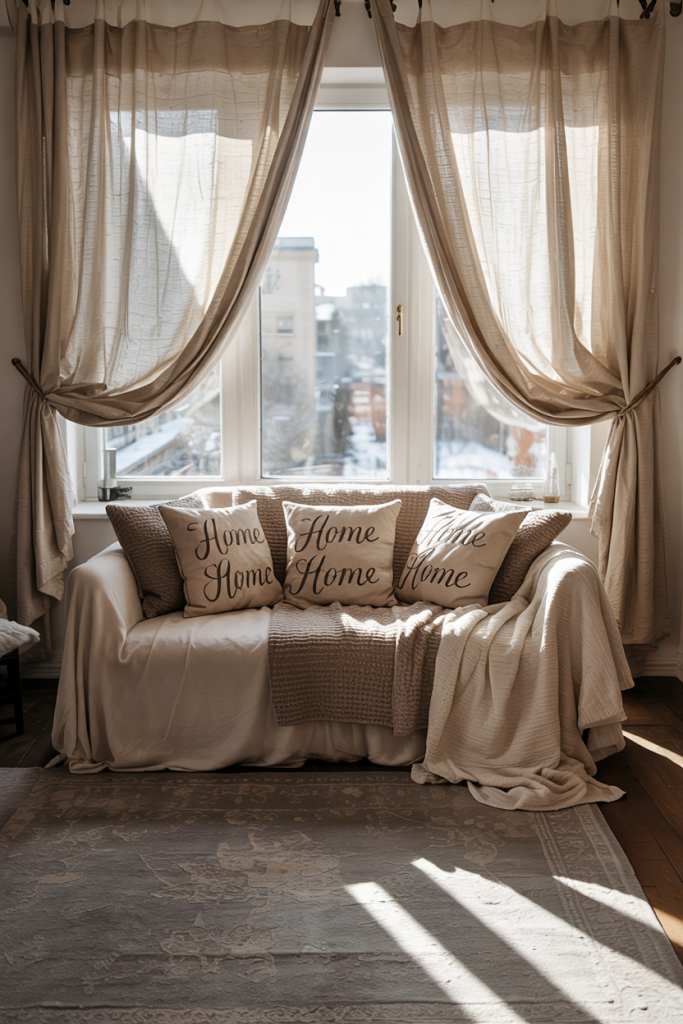
17. Music Room Living
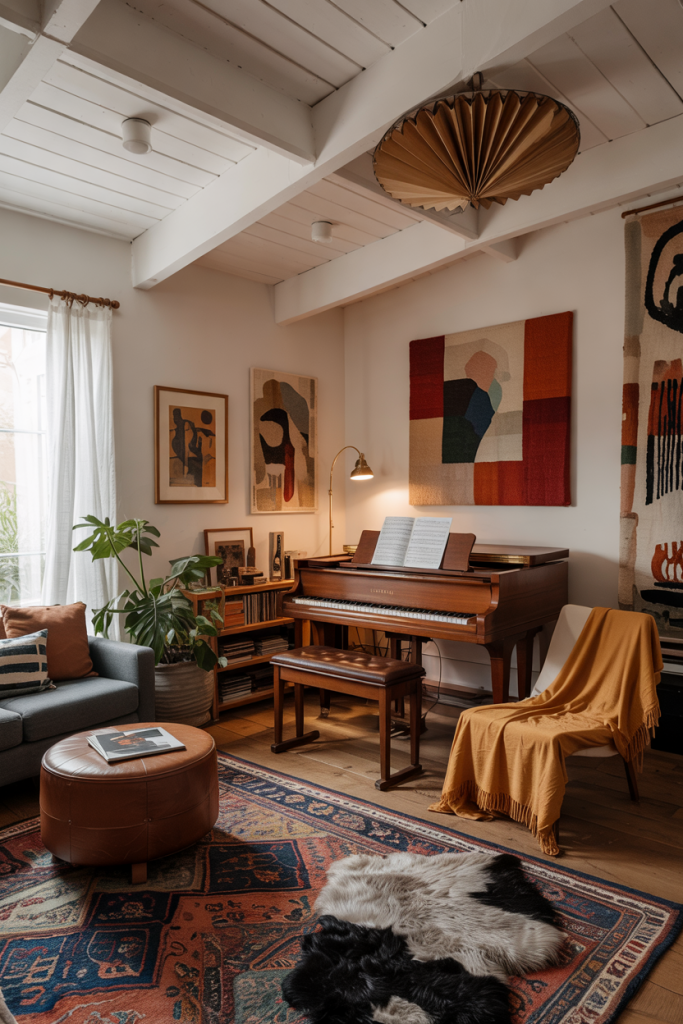
Transform your living space into a mini music hall by centering it around instruments and acoustic zones. Place a piano or record player as the focal point, surround it with casual seating, and use layered sound-absorbing decor like rugs, tapestries, or velvet furniture. Architectural Digest suggests this for audiophiles seeking both form and function.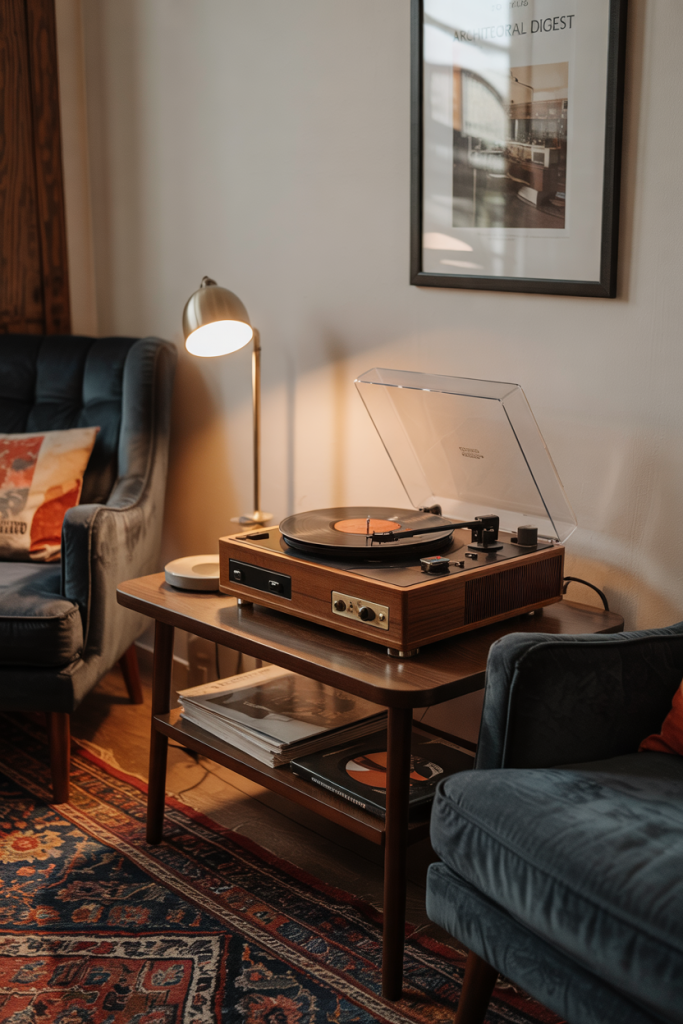
18. Statement Stair Integration
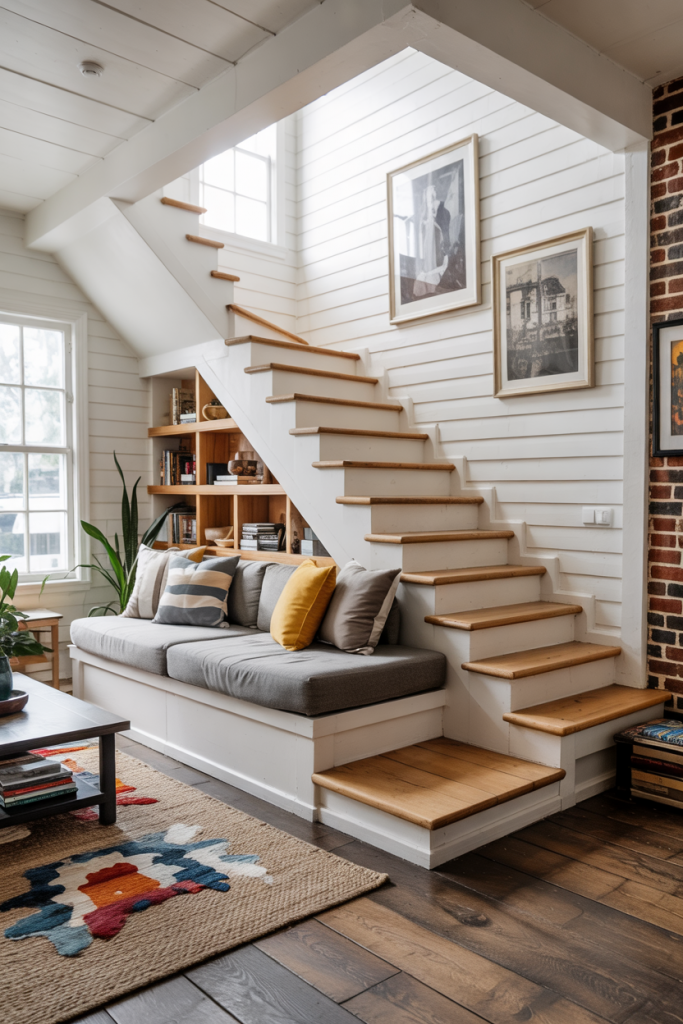
If your living room connects to a staircase, use the stairs as an integrated design element. Wrap built-in seating around the base or use under-stair nooks for extra storage or furniture placement. This works especially well in smaller homes or urban lofts, where smart layout solutions matter. Houzz showcases stair-adjacent spaces as “the new style frontier.”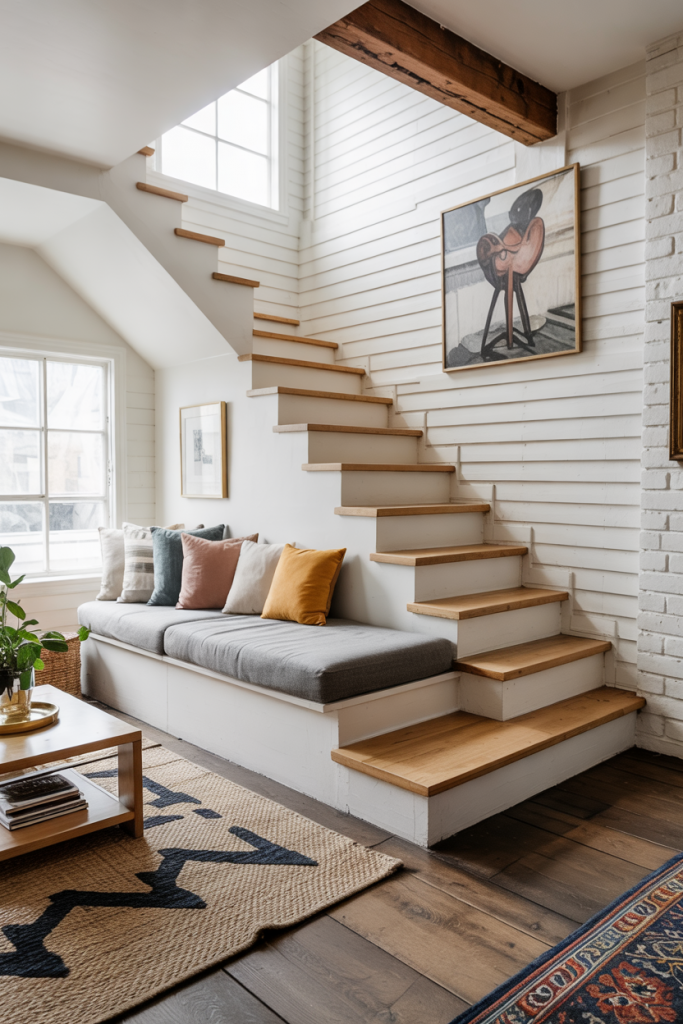
19. Abstract Art as Anchor
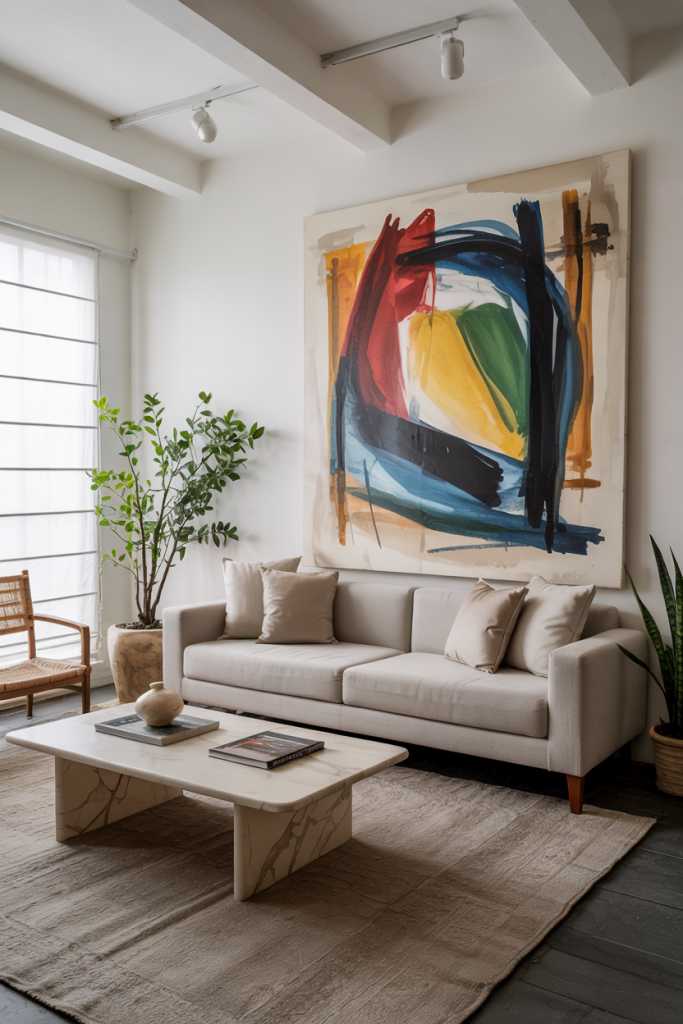
Make a single oversized abstract painting or installation the anchor of your room. Build the layout and seating around it like a gallery exhibit. Choose furniture that doesn’t compete for attention—low-profile, neutral, sculptural. The decor stays minimal so the art dominates. This works well for minimalist or modern homes craving a focal point.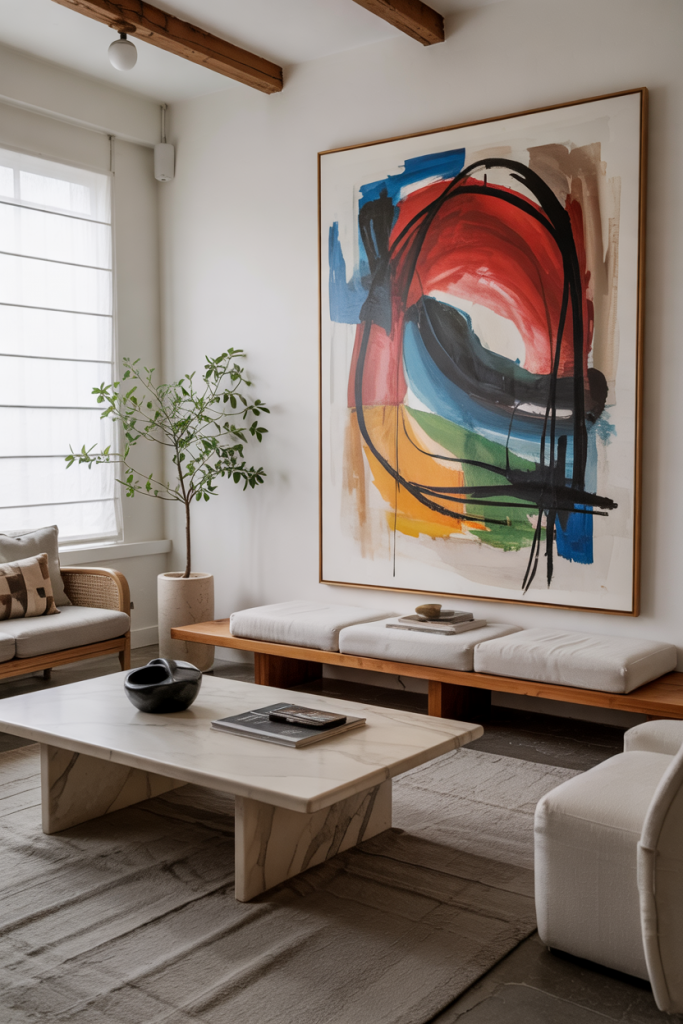
20. Zen Meditation Lounge
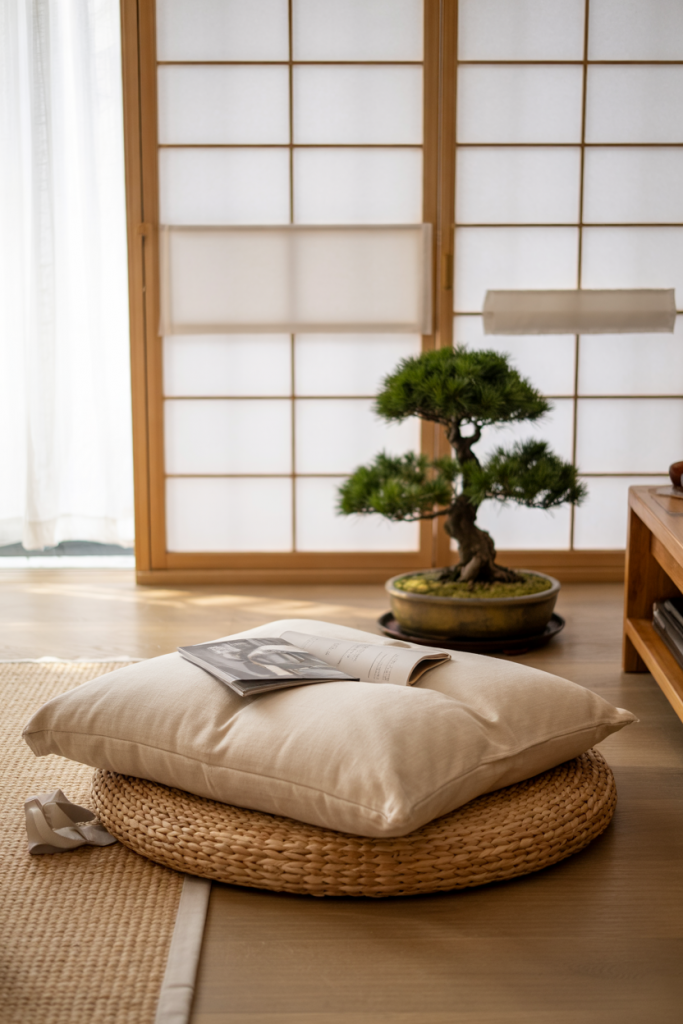
Borrowing from Japanese or Scandinavian influence, a Zen layout incorporates floor-level seating, natural textures, and extreme simplicity. Tatami mats, shoji screens, and light woods set the mood, while bonsai or rocks add calm decor accents. Designer Marie Kondo promotes these quiet rooms for clarity and presence.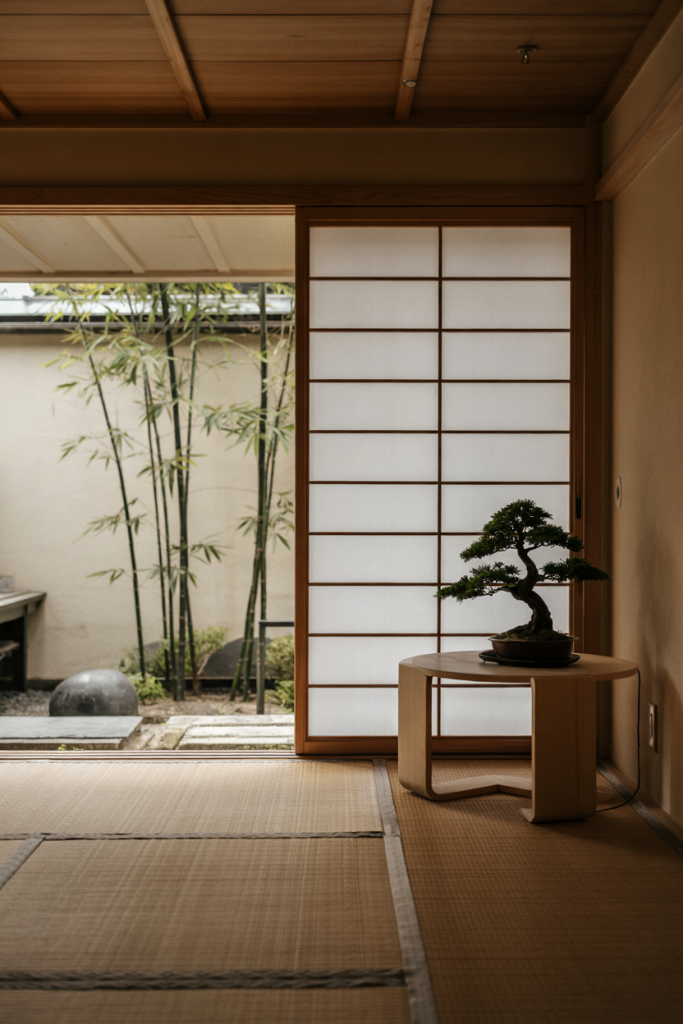
21. Hidden Tech Sanctuary
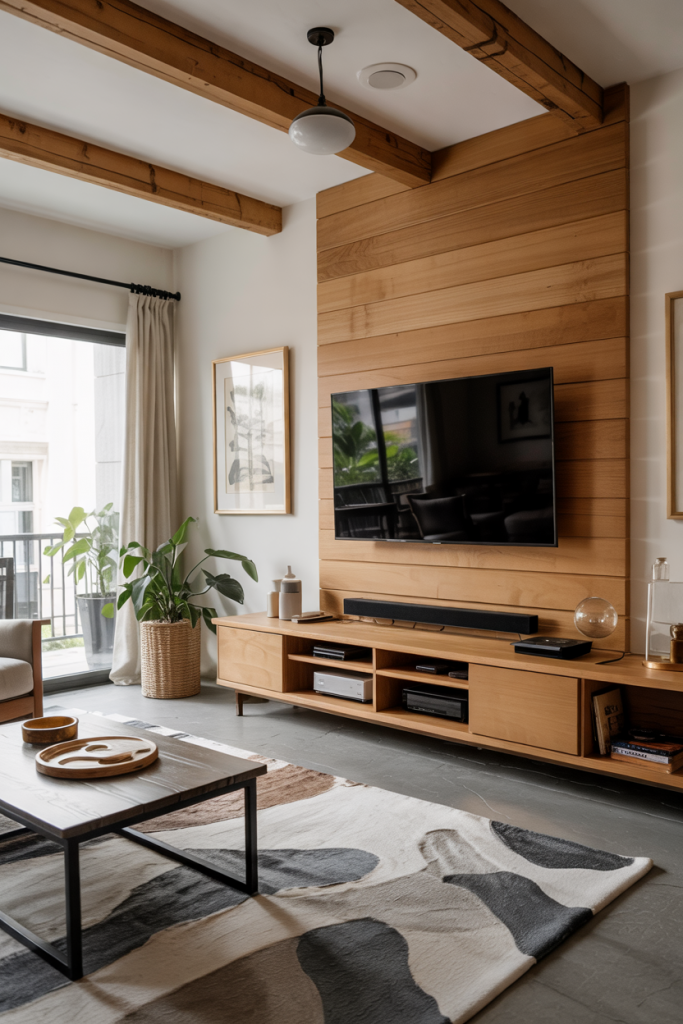
A living room that hides tech instead of flaunting it creates an unexpected twist. TVs descend from the ceiling, speakers hide in art frames, and wires are invisible. This design idea is perfect for people who prioritize visual serenity but still want modern functionality. Furniture with built-in charging and hidden compartments helps preserve a clean layout.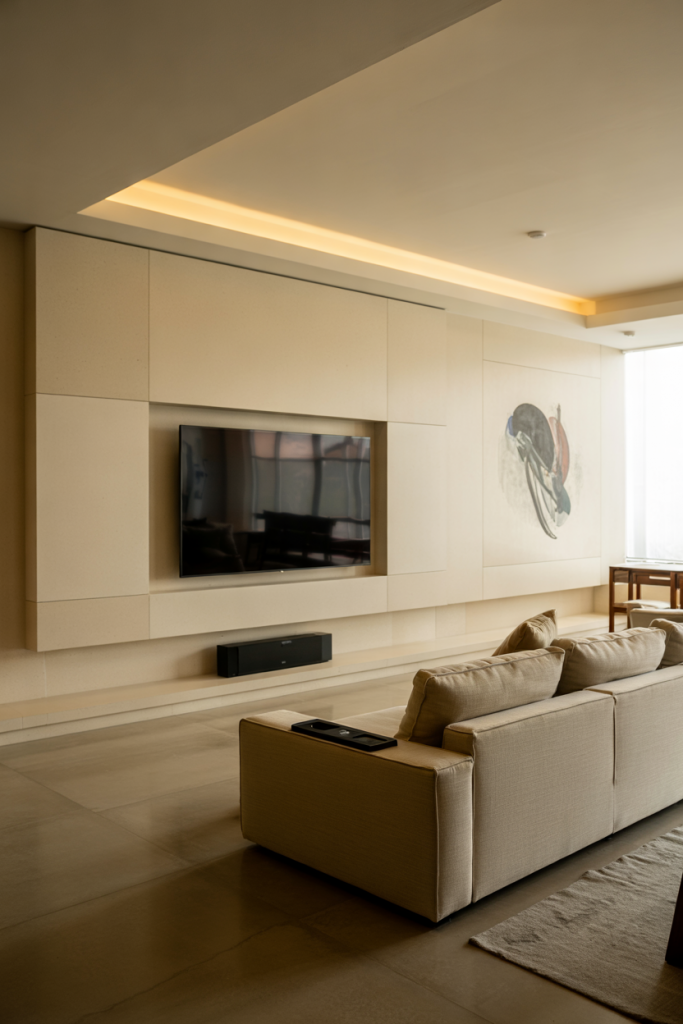
22. Boho Tent-Inspired Den
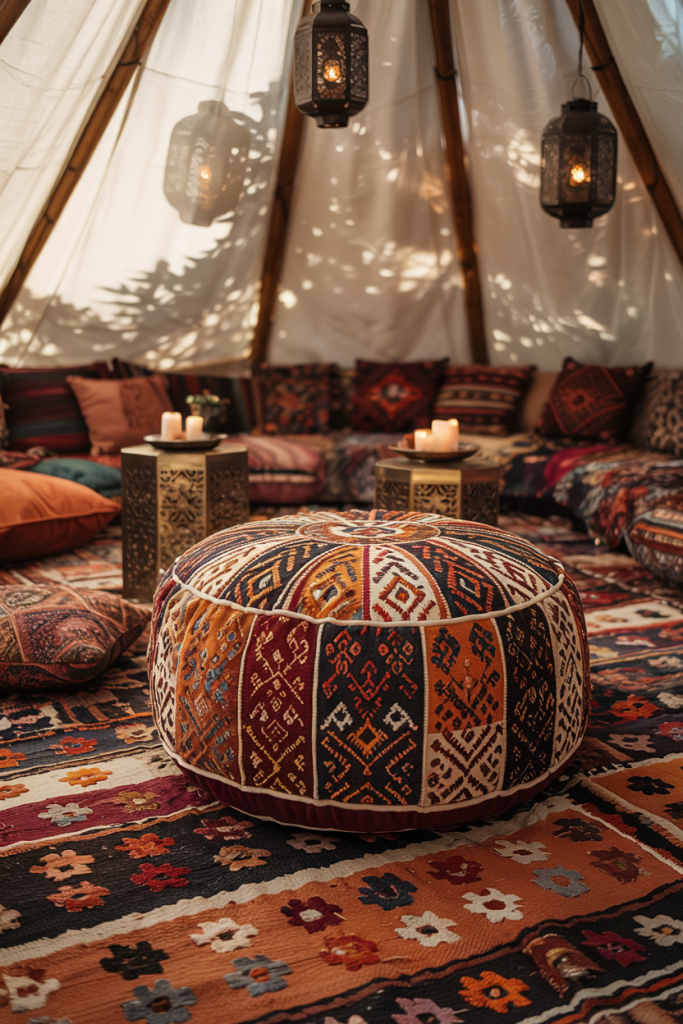
A cozy, tent-like layout with layered textiles, floor seating, and low lighting brings a whimsical escape into your home. Use Moroccan poufs, layered kilims, and hanging lanterns to build atmosphere. This decor-rich idea is perfect for casual lounging or creative gatherings. As seen in The Jungalow, this setup is “bohemian comfort turned inward.”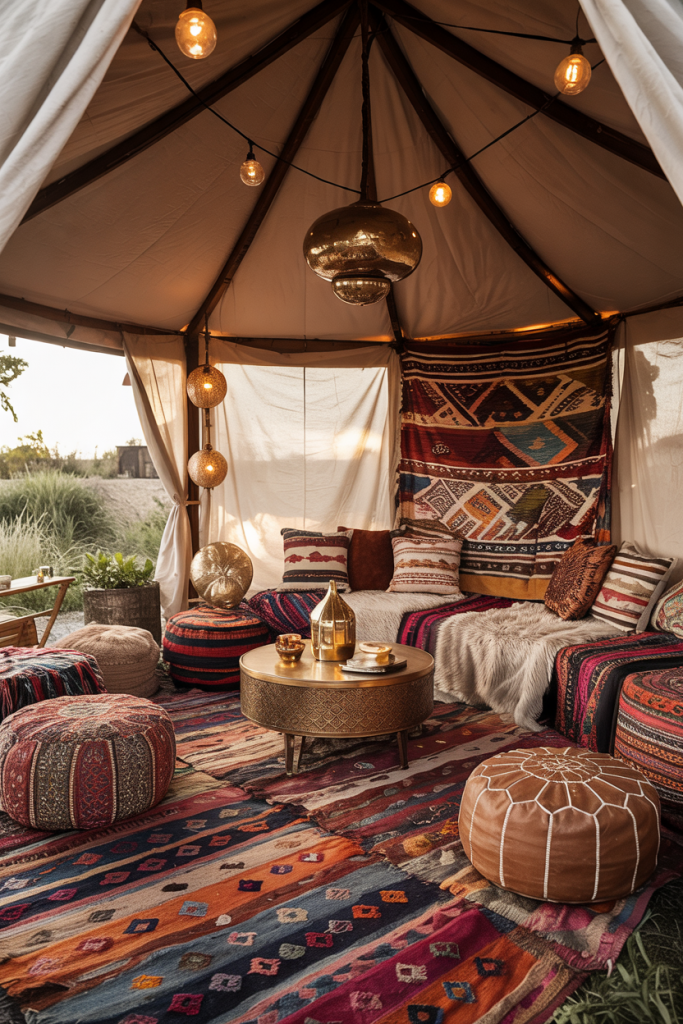
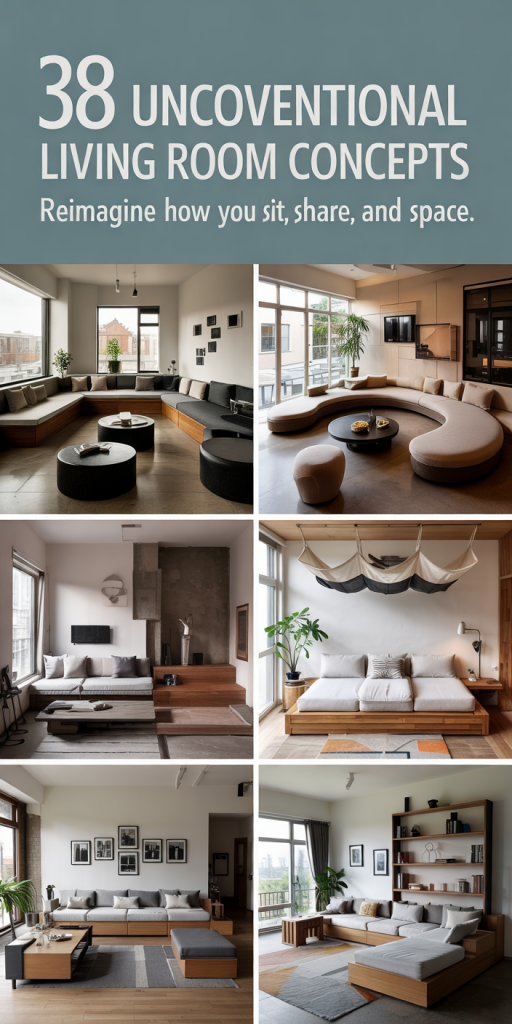
Conclusion
Rethinking your living room doesn’t mean breaking the bank or knocking down walls—it means reimagining the potential of every corner. From jungle-themed lounges to circular arrangements, these ideas challenge convention while honoring personal comfort. Whether your goal is more seating, better furniture, or simply a fresh layout, there’s something here to spark your next move. We’d love to hear your thoughts—drop a comment below and share how you’ve pushed the boundaries of traditional living room design in your own space.
